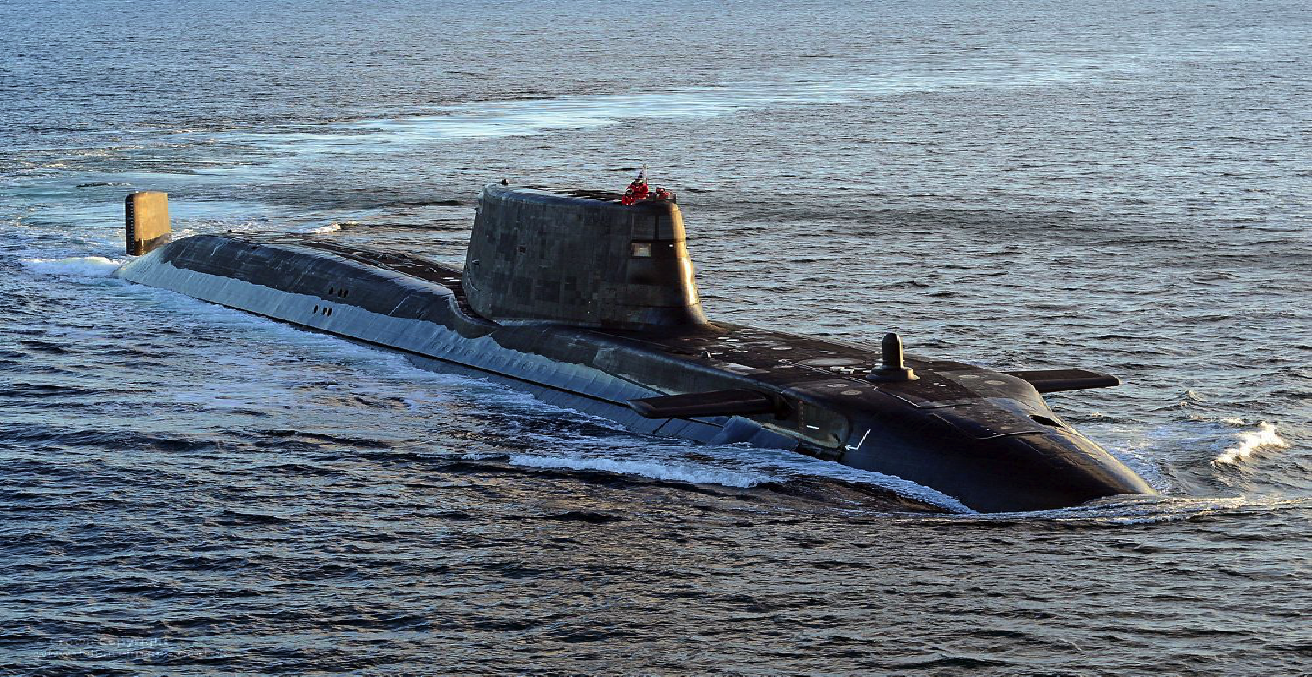The Attack-Class Submarine: Mistakes and Future Implications

The demise of the Attack-class submarine paves the way for greater Anglosphere maritime cooperation in the Indo-Pacific. Replacing the Attack-class with a nuclear-propelled submarine also signals a new regional challenge to China.
The Morrison government’s decision to scrap the $90 billion program to build 12 Attack-class submarines and pursue nuclear-propelled vessels will drastically improve Australia’s maritime prowess. Australia’s current submarine fleet will likely be replaced by eight American off-the-shelf (OTS) nuclear-propelled submarines, potentially the Virginia-class submarine, infused with British and US technology. The joint US-British decision to offer nuclear submarine technology would give Australia a submarine with virtually infinite range, and greater survivability and lethality in comparison to conventionally-powered vessels.
It is also a significant moment due to the USA and Britain’s prior opposition to transferring anechoic tiles for the Collins-class submarine. Anechoic tiles, which are intended to reduce the noise signature of a submarine to sonar detection and are fitted to US and British nuclear submarines, were denied because of a bilateral nuclear technology transfer agreement. Under the new agreement, Australia would now be able to gain access to anechoic tile technology. Australia is the only country, since Great Britain in 1958, to be given access to American nuclear submarine propulsion technology. It is, therefore, likely this decision to scrap the Attack-class in favour of nuclear submarines was motivated by both strategic considerations and contractual issues.
The Attack-class has faced problems since its inception, due to it being an adapted conventional design of a French nuclear submarine. Built under contract by the French Naval Group company, the original contract in 2016 promised 90 per cent of construction would be in Australia. However, Canberra was still facing contractual issues just this year, after the Naval Group promised only 60 per cent of the total contract value. The Attack-class has also faced major delays with system requirement reviews. Therefore, it is not totally surprising that the government abandoned the project and sought foreign assistance for a nuclear submarine.
Strategic considerations were also a likely factor with the decision to pursue nuclear propulsion accompanied by the creation of AUKUS. The union of Australia, the UK and the USA signals a stronger strategic alignment in the Indo-Pacific. The UK’s participation indicates a potential willingness to significantly increase its military presence east of the Suez, which was originally reduced in 1966 in order to refocus on Europe.
Cooperation between all three AUKUS nations will extend throughout the capability sphere and support recent collaborative procurement efforts. This includes the Australian acquisition of the Long-Range Anti-Ship Missile – Surface Launch (LRASM-SL), based on the Joint Air-to-Surface Missile Extended Range (JASSM-ER). Australia has also recently signed a cooperative research treaty with the US Ballistic Missile Defence Organisation. The new advanced missile capabilities will also allow Australia to counter recent Chinese advancements in hypersonic missiles. The new submarines will potentially feature conventional ordinance like the Tomahawk cruise missile, but not nuclear weaponry.
The enhancement of Australia’s strategic strike capabilities and the creation of a new security pact is likely to be seen by China as an attempt to undermine its interests in the South China Sea. While we may see Australia nuclear vessels operating in the South China Sea, questions linger over the new submarine’s sovereign control and self-reliant features. The new vessels will possess questionable sovereign control as Australia will remain dependent on US and British input, technology and resupply throughout the new submarine’s life cycle. It is also debatable whether all source codes will be transferred, which were previously denied for projects like the F-35 Joint Strike Fighter to protect US stealth secrets, and whether the new submarine will prompt a high workload for local manufacturers.
At present, Australia currently lacks a nuclear industry to support any new submarines and an OTS option will likely reduce local design input. Nonetheless, the Morrison government is committed to building future nuclear submarines in South Australia. An Australian-built OTS vessel would benefit from reduced risk of budget blowouts and delays, in comparison to the Attack-class, due to it being a proven design. The downside of a foreign-designed OTS nuclear-submarine is that Australian companies will have few opportunities to gain new design knowledge. Costs are an additional concern, with bigger nuclear boats requiring greater sustainment funding, which has implications for capability planning.
Australia’s current capability plans will now require updates with the abandonment of the Attack-class. The Attack-class submarine was originally intended to be the centerpiece of a continuous rolling block of naval vessels, including the Arafura-class Offshore Patrol Vessel and Hunter-class frigate, stretching across to at least 2055. It is now possible that the Royal Australian Navy (RAN) will not get its first vessel for 18 years, which is at odds with the 2020 Defence Strategic Update stating that a ten-year strategic warning time for a state-on-state conflict is no longer feasible in a dangerous Indo-Pacific. This leaves Australia in a very precarious position either fielding ageing Collins-class submarines across a long period or acquiring an expensive interim option.
The decision to abandon the Attack-class submarine in favour of an OTS option will have significant implications for Australian military and industry capabilities. New projects, interim options and a realignment of workloads will be required until the new submarine program can be initiated. The lack of a supporting nuclear industry and a reliance on US-British design input will ensure that Canberra will remain firmly interconnected with AUKUS in the Indo-Pacific. Eventually, AUKUS and the addition of a new lethal RAN military capability will give Australia greater strategic weight and an improved capacity to negotiate regional challenges, but not before a nervous long wait for the vessels.
Ben Stevens is currently a fourth year PhD student studying at the University of Newcastle. His main areas of expertise are centered on Australian-American defence relations and Australian defence procurement.
This article is published under a Creative Commons Licence and may be republished with attribution.





